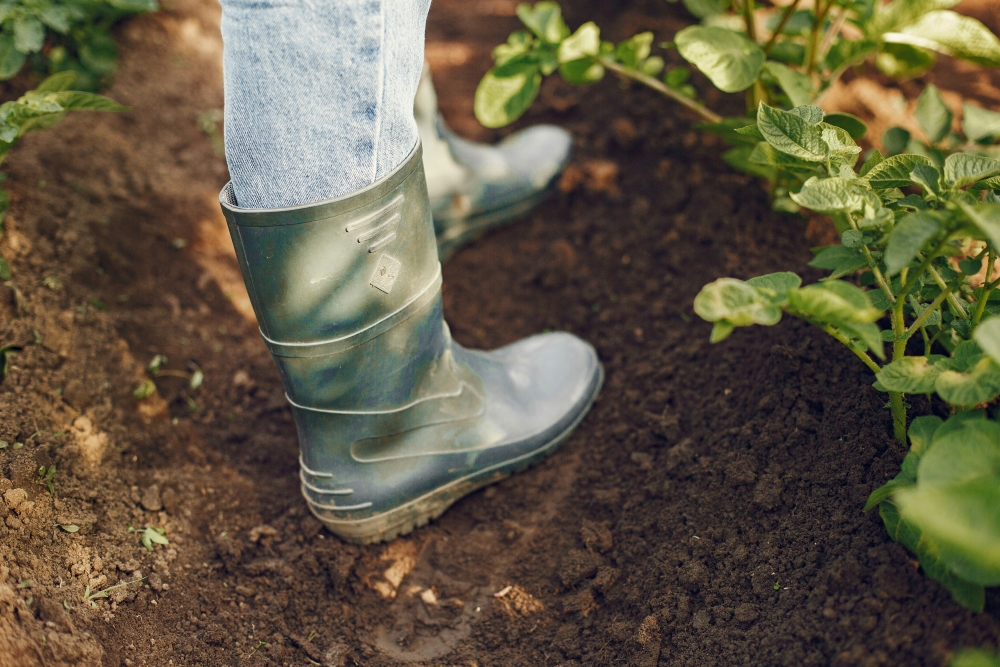There are so many impressive benefits of caring for your garden. It can help you to feel more positive and gives you a lovely place to relax. This blog is our beginner’s guide to basic garden design principles.
Creating your own garden design is very exciting. There are so many different design elements to consider. It’s great to start with a blank canvas for your garden, but you can also easily change aspects of your existing garden.
Research into landscape design principles
The first step to designing your garden space is to research. When researching different ideas, you should consider the size of your garden. You can find many great options regardless of your garden size. Even a small garden can be impressive!
Having an understanding of the size of your garden can help you to decide which elements are most important to you. For example, will you have a seating area? Do you need space for a shed or other items?
You’ll also need to think about how much time you have to spend maintaining the garden. Would you be better off looking into low-maintenance garden-style ideas rather than ideas that may take up more of your time? There are many low-maintenance ideas, such as leaving a fence a natural colour and utilising the walls of the house for planting shrubs.
Assessing the outdoor area
In addition to looking at how much space you have in your garden, you’ll also need to consider the conditions. Remember that plants and greenery require different amounts of sunlight, rain and more. This means you’ll need to carefully plan where each plant will go.
Once you’ve assessed the conditions in your garden, you can select a range of plants that will thrive in the conditions. Have you considered creating your own vegetable garden? Planting your own vegetable shrubs is a great way to stay healthy!
You might find it useful to draw out a plan for your garden. You can measure areas and note down what the conditions are like in each section.
Planning like a garden designer
One design aspect that many people incorporate into their gardens is symmetry. Symmetry can make a space appear more balanced and formal. It can be easier to focus on symmetry with larger gardens, but it can be achieved in a smaller garden if you wish!
In most cases, home gardens tend to be asymmetrical with design elements. This can make the space feel a little more relaxed. You don’t need to worry about not being able to organise the garden without symmetry, as there are plenty of options.
One option to help organise the garden is to use lawn edging. FlexiBorder is available in a range of colours and is a durable and weather-resistant option for your outdoor space. Our edging is made using recycled rubber, making it an environmentally friendly option too. It’s a versatile option that has been used to organise many spaces, such as sports centres, playgrounds and street flowers.

Landscape design – how to make the garden flow
Every garden should flow in order to be a useful and relaxing space. By the garden flow, we mean how it can be used. Does your garden follow a path, perhaps towards a seating area or a tree? It’s a good idea to have a set walkway so that guests know where they can and cannot walk. This can help to avoid damage to plants and flowers. You’ll likely want to introduce a gradual change for different areas rather than having abrupt transitions.
Choosing the right plants
There are so many lovely plants to choose from. As we mentioned previously, you will need to take some time to think about the conditions in your garden and which plants will thrive where.
When creating a beautiful garden, it can help to have a pattern with plants. For example, think about the colours of the flowers and the various shades of green. Having a pattern and repeated shapes helps to create unity and shows how well thought out your garden is.
Utilising a range of small trees is one of the many important principles of garden design. These small trees can be used alongside a large tree to balance the visual weight of the landscape design. Large trees with an interesting shape can be a great focal point. Think about the plant texture when choosing flowers and green foliage.
Read our blog on the best ideas for flowerbed borders.
Garden objects and structures
There are many interesting objects that you could incorporate into your outdoor space. From large plant pots to rockery and even hammocks – there’s something for everyone.
You should take some time to think about what it is you want to achieve from your garden. Do you want to create a relaxing escape, a place for get-togethers or a space for children to play? Whatever it is you want to achieve, you can! When choosing garden items, make sure to think about the sizes, colours and where they can go.
Creating your new garden should be a fun experience, and with our fantastic lawn edging solutions, you can create focal points and corners too. Check out our online shop and read more about installing FlexiBorder and FlexiCorner.
There are so many garden design principles that you can incorporate into your outdoor space. We hope this blog has been useful for you and that you can create your dream garden using these basic principles. Don’t hesitate to contact us for advice.



